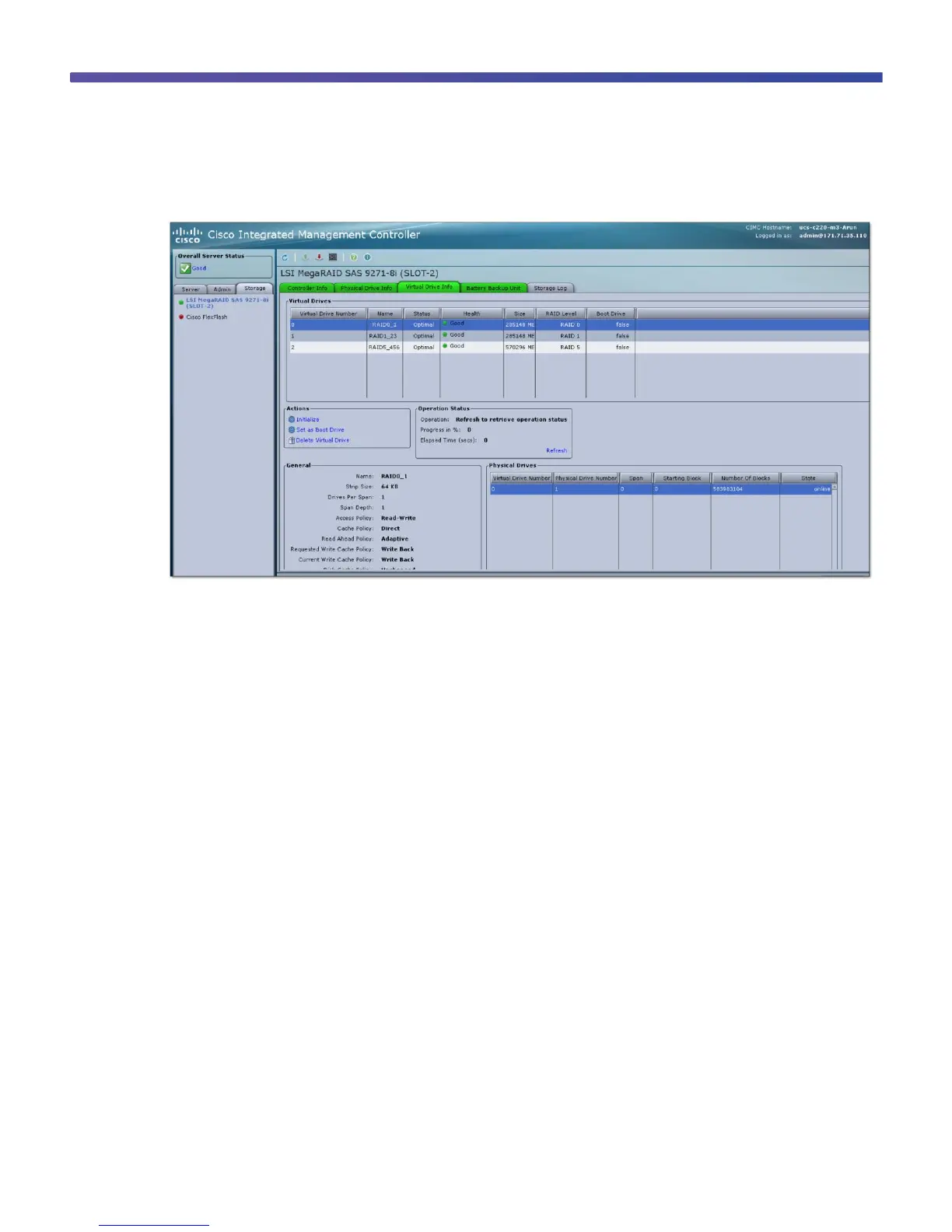© 2014 Cisco and/or its affiliates. All rights reserved. This document is Cisco Public. Page 16 of 33
Step 5: Navigate to the Virtual Drive Info tab to see the virtual drives created. In this example, three virtual drives
have been created (RAID 0, 1, and 5).
Creating a Hot Spare
A hot spare is an additional, unused drive that is part of the disk subsystem. It is usually in standby mode, ready for
service if a drive fails. If a drive used in a RAID virtual drive fails, a hot spare automatically takes its place, and the
data on the failed drive is rebuilt on the hot spare. Hot spares can be used for RAID 1, 5, 6, 10, 50, and 60.
Two types of hot spares are used:
●
Global hot spares
●
Dedicated hot spares
Creating a Global Hot Spare
A global hot spare drive can be used to replace any failed drive in a redundant drive group, as long as its capacity
is equal to or larger than the capacity of the failed drive. A global hot spare defined on any channel should be
available to replace a failed drive on both channels.
